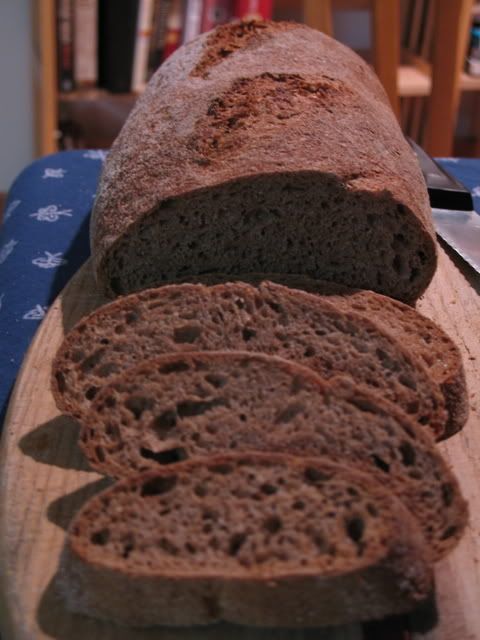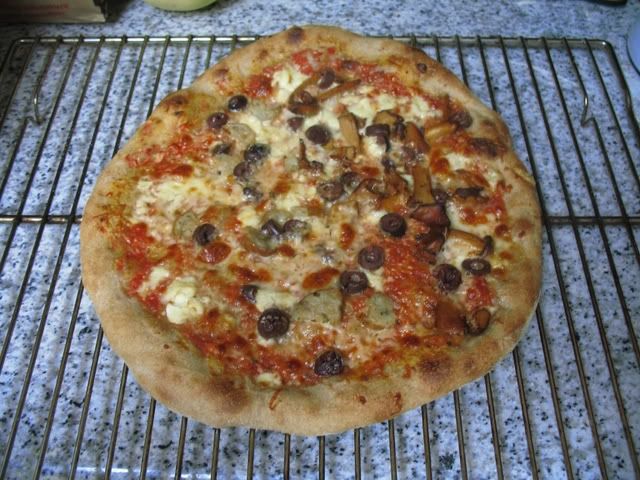Since Labor Day weekend, I have been out of the country on business trips almost constantly. Most of my time is spent in the Ensenada area, which is about a 90-minute drive south of San Diego. There was a 1-week trip to Trinidad (also business) but, other than the odd weekend back home every other week, I’ve been here in Ensenada the whole time. The only exception was last week, when I spent a week of vacation at home.
In ordinary circumstances, that would be far more time away from home than I like. My present circumstance is that we sold one house, bought another and moved in the Thursday before Labor Day. And then I got the “We need you here next week” call on Friday. The following Tuesday, I was on my way to Mexico, with only three weekends at home since then. Not the best set-up for doing all the things that go along with moving into new place. My wife is very competent and has dealt with the load very effectively and graciously but there is way more than she can deal with alone, particularly if it involves heavy lifting. Consequently, my weekends at home have been crammed with moving heavy items, painting (LOTS of painting), yard work, etc. I managed to squeeze one batch of sourdough bread in on one of the weekends, mainly because I needed to refresh the starter anyway. Other than that, it’s been a long time with virtually no chance to play in our new kitchen.
Until last week. Yes, housework still went on. We painted two bedrooms and one bathroom upstairs (the kids were coming later in the week and we thought they might want quarters that looked like dwelling places rather than construction sites), hung pictures and mirrors, and, with help from one son-in-law, installed the surround sound system. But, in and around all of that, there was baking; lots and lots of baking.
The first bread was the Pumpkin Cornmeal bread from Beth Hensperger’s Bread for All Seasons. I was looking for something to start on while building the sourdough starter up, along with wanting to do something seasonal. After looking through several books, it looked like just the ticket. It’s a yeasted bread that includes pumpkin puree, cornmeal and some rye flour, too. I shaped it into boules and baked them on a stone. The loaves had a warm, golden tone in both the crust and the crumb, thanks to the pumpkin. Wonderful stuff, as it turns out. Very good by itself and delightful when paired with homemade applesauce. It made delicious toast, too.
I got a little carried away with building the sourdough starter, winding up with nearly three pounds of it. After giving it some thought, I realized I could use as much as I needed for whatever I wanted to make and refrigerate the unused portion for subsequent batches so that I wasn’t committed to baking everything in a single day.
My first sourdough choice was the Pain au Levain with Whole Wheat from the King Arthur Flour Whole Grain Baking book. I have made it several times before, with varying results. This time around, I used a 50/50 blend of Wheat Montana’s Bronze Chief and Prairie Gold whole wheat flours, which gave me plenty of whole wheat flavor without the bitterness that sometimes accompanies the red wheat varieties. I scaled the formula up enough to produce three large batards, adding some additional water to accommodate the “thirstiness” of the Wheat Montana flours. That’s probably what gave me the best results that I have had with this formula. The finished loaves had a crumb that was much more open than I usually achieve, which was both chewy and moist. The good news/bad news aspect about scaling up the formula was that the loaves wouldn’t fit on my rectangular stone, so I wedged a round pizza stone in beside it so that I could bake all of them. Not the best decision. I think that I blocked enough air flow inside the oven that the heat sensors couldn’t properly measure the temperature. As a result, the bottoms of the loaves came out a bit scorched. The rest of the crust was an incredibly deep reddish-mahogany tone with lots of blisters. I can live with the scorched bottom crust, since everything else about the bread turned out so well. However, I won’t be using that approach with the baking stones for future attempts.
Next up was the New York Deli Rye from Peter Reinhart’s Bread Baker’s Apprentice. My wife loves this stuff and I can’t argue with her. It’s a wonderful bread, studded with bits of onion and caraway (or fennel seeds, in this case). Since I had whole-grain rye flour on hand, instead of the white rye that the formula calls for, I used that. The loaves were probably a bit more dense, as a result, but in a good way. Since I was using AP flour instead of a high-gluten bread flour, I added a tablespoon of gluten for each loaf, which probably kept them from being bricks. I chose to bake it in loaf pans for sandwich bread, rather than as hearth bread.
Before going to bed that particular evening, I mixed up some sourdough English muffins from the formula in the King Arthur Flour 200th Anniversary Cookbook so that it could ferment overnight. The following day, instead of rolling out the finished dough and cutting the muffins, I scaled it into 2.5 ounce pieces which I shaped into loose balls and then flattened them into disks. I’m still not sure about my results with these. They look great and the flavor is fantastic, but the crumb tends to be smoother than I want; not the ragged, open texture that I’m looking for. It’s probably two factors; one, a need for additional hydration and two, gentler (or less) handling. However, nobody complained. My 5-year old grandson even requested one for an afternoon snack.
The last bread that I made with the remaining starter was the Sourdough Oatmeal Maple bread from the King Arthur Flour Whole Grain Baking book. Instead of rolled oats, I used some rolled barley flakes that were on hand. That was a good choice. The resulting loaves were large, tall boules (enhanced, no doubt, by the addition of some gluten in the dough), crusty on the outside with a moist, chewy crumb. The barley flakes should have been in a soaker overnight, but I cheated by soaking them in hot water while assembling the rest of the dough. They added a lovely heft and resistance to the crumb. The maple syrup showed up as a low-key sweetness, without an overt maple flavor. Maybe it would have been more noticeable if I had used oats rather than barley. The bread played very well against a beef roast that we had for dinner one evening.
While I would have loved to post some pictures, our home PC was in the shop that week for what turned out to be some dying memory chips. The uneaten portions of the bread either went home with our daughters or into the freezer, so no pictures and no way to post them.
It was a wonderful week on a number of levels, not the least of which was the chance to be at home and baking again.
Now I’m back in Mexico and baking vicariously through other TFL members’ posts.
Paul








 .
.

 4# Crusty Boule
4# Crusty Boule Crumb
Crumb





